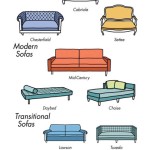Renewing Your Leather Sofa: A Comprehensive Guide to Essential Aspects
Leather sofas, with their timeless elegance and luxurious appeal, are a cherished investment in any home. However, over time, even the finest leather can show signs of wear and tear. If your leather sofa has lost its luster, restoring it to its former glory is possible with proper care and attention to essential aspects.
1. Cleaning and Conditioning
The foundation of leather sofa renewal lies in regular cleaning and conditioning. Use a soft, damp cloth to wipe away dust and dirt gently. Avoid harsh chemicals or abrasive cleaners that can damage the leather's surface.
Conditioning is crucial to maintain the suppleness and prevent cracking of the leather. Apply a leather conditioner specifically designed for the type of leather your sofa has and follow the manufacturer's instructions. Regular conditioning helps keep the leather flexible and protected from environmental factors.
2. Repairing Scratches and Tears
Minor scratches and tears are repairable, extending the life of your leather sofa. For scratches, use a leather repair kit that matches the color of your sofa. Clean the scratched area and apply the repair paste or cream according to the kit instructions.
Tears require professional attention. A skilled leather repair specialist can match the leather color and texture, ensuring a seamless restoration.
3. Recoloring and Refinishing
If your leather sofa has faded significantly or has stubborn stains, recoloring or refinishing may be necessary. Recoloring involves applying a new coat of color to the entire sofa, while refinishing involves stripping the old finish and applying a new one.
Both recoloring and refinishing are complex processes that require expertise. Seek the services of a professional leather restorer to achieve optimal results.
4. Upholstery Replacement
In cases where the leather on your sofa is beyond repair, upholstery replacement is the best option. This involves removing the old leather and replacing it with new leather or a different material.
Upholstery replacement is a major undertaking and should be entrusted to an experienced upholsterer. Discuss your options, including material selection, to find the perfect solution for your needs.
5. Understanding Leather Types
Different types of leather require specific care methods. Understanding the type of leather on your sofa will help you choose the right cleaning and conditioning products.
Common leather types include:
- Full-grain leather: The most durable and highest-quality leather, with natural markings and imperfections.
- Top-grain leather: The second-best quality leather, with a thin protective coating that enhances stain resistance.
- Corrected-grain leather: A lower-quality leather with the surface imperfections buffed out and a synthetic grain applied.
- Bonded leather: A combination of leather scraps and other materials, offering a leather-like appearance at a lower cost.
Consult with a leather expert or the manufacturer's instructions to determine the type of leather on your sofa.
Conclusion
Renewing a leather sofa requires a combination of proper care and professional attention. By following the essential aspects discussed above, you can restore your leather sofa to its former beauty and extend its lifespan. Whether it's regular cleaning, minor repairs, or major upholstery replacement, investing in your leather sofa ensures years of comfort and elegance in your home.
Wells Renew Vegan Leather Sofa Reviews Crate Barrel

Leather Furniture Repair Couch Chair Restoration

Best Leather Dye For Couches Colors Restoration Supplies

Leather Furniture Repair Couch Chair Restoration

Leather Sofa Restoration How To Re Faded

Our Leather Repair Dyes Used On This Old Faded Worn Couch
Wells Renew Vegan Leather Sofa Crate Barrel

Leather Sofa Restoration How To Re Faded

Fix Faded Leather Fast

Rub N Re Reviews Photos From Real Customers Leather Restoration Repair Couch








